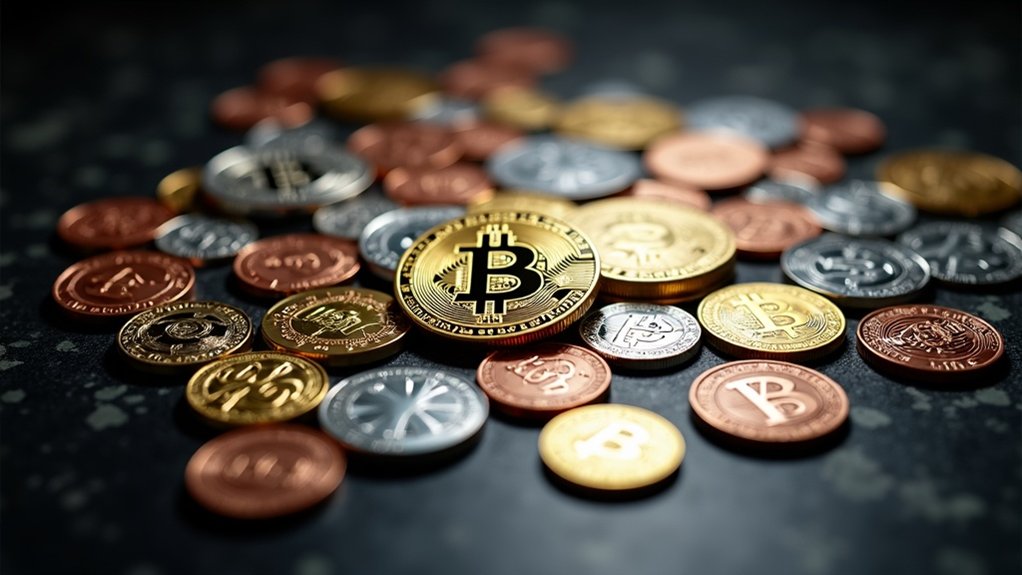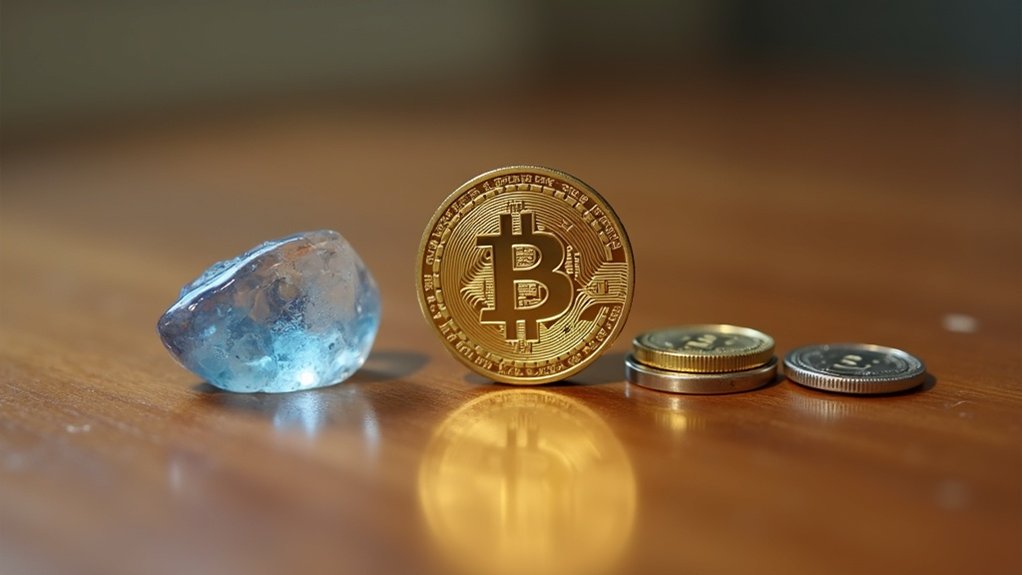Crypto games blend blockchain technology with gaming, letting players truly own their virtual assets as NFTs. Unlike traditional games, these digital items can be sold, traded, and used across multiple platforms—even if the original game disappears. Many operate through DAOs where players vote on game changes. The play-to-earn model enables gamers to earn actual cryptocurrency by completing in-game activities. Security comes from blockchain’s distributed nature. The gaming landscape is changing, and those virtual swords might be worth real money.
While traditional gamers build digital empires that vanish when servers shut down, crypto games are changing the rules entirely. These digital playgrounds leverage blockchain technology to transform virtual assets into something players actually own.
No more spending hundreds on in-game items that disappear when a company pulls the plug. Brutal, but true.
Crypto games go by many names—blockchain games, NFT games, web3 games, metaverse games. Different labels, same core concept. They’re decentralized, which means no single entity controls everything. Your sword, spaceship, or digital pet exists as an NFT on the blockchain. You own it. For real. Not just some line in a company’s database that they can erase whenever they want.
Whether you call them blockchain, NFT, or web3 games, they all give you true ownership of your digital gear. No corporate delete buttons.
The ownership thing is a big deal. In traditional games, your rare items stay trapped forever. In crypto games? They’re portable. Sell them. Trade them. Use them across different games. Keep them even if the original game dies. Players finally have control, not corporations. Like smart contracts in DeFi, these games automate ownership and trading without intermediaries.
These games often operate through DAOs—Decentralized Autonomous Organizations. Players vote on changes. The community decides the future. Transparency is built in because every transaction gets recorded on the blockchain. Everyone can see the rules. No hidden tricks.
Then there’s the money aspect. Play-to-earn models let gamers make actual income. Complete quests, win battles, collect resources—get paid in cryptocurrency tokens. Some people in developing countries have supported their families playing games like Axie Infinity. Imagine that.
Security is tighter too. The distributed nature of blockchain makes hacking harder. Smart contracts automate game mechanics without human intervention. The interoperability between games allows your digital assets to have utility across multiple gaming platforms. Popular blockchain gaming platforms like The Sandbox and Decentraland offer immersive metaverse experiences where players can truly own virtual land and assets. Your assets stay in your crypto wallet, not on some company’s vulnerable server.
Of course, it’s not all perfect. These games are still evolving. But they’re flipping the power dynamic between players and developers. Gamers aren’t just consumers anymore—they’re owners, traders, and sometimes even governors of entire virtual worlds.
Frequently Asked Questions
Are Crypto Games Legal in All Countries?
No, crypto games aren’t legal everywhere. Many countries exist in legal gray areas with no clear laws specifically addressing them.
Some nations ban online gambling outright—crypto payment method be damned. Others require licenses that decentralized platforms struggle to obtain.
Regulatory compliance is a nightmare, especially with AML and KYC requirements. The landscape’s constantly shifting too.
What’s legal today might not be tomorrow. Regulators are definitely catching up.
What Skills Do I Need to Profit From Crypto Games?
Profiting from crypto games requires a diverse skill set. Players need solid game mechanics knowledge, strategic thinking, and investment acumen.
Technical skills are non-negotiable—managing wallets, understanding blockchain basics, and traversing marketplaces. Community engagement matters too. Some make bank through skilled gameplay, others through clever trading of NFTs and tokens.
The learning curve? Pretty steep. Not everyone strikes gold in this digital frontier. Success demands persistence and adaptability—no shortcuts here.
How Much Can I Realistically Earn Playing Crypto Games?
Realistic crypto game earnings vary wildly. Some players make $2-20 daily in games like Axie Infinity, while others chase those juicy 600% APY staking returns.
The truth? Most earn peanuts. Market volatility can turn your “fortune” to dust overnight.
Serious players investing time and money might see decent returns, but casual gamers? Not so much.
The $21.6 billion market isn’t spreading wealth equally. Time, skill, and initial investment separate the winners from the dreamers.
Can I Play Crypto Games Without Investing Money First?
Yes. Free-to-play crypto games exist. No wallet-draining required. Games like Axie Infinity (free mode), Gods Unchained, and Splinterlands let players start earning without spending a dime.
Some offer scholarships—basically borrowing someone else’s NFTs and splitting profits. Others drop free NFTs to newcomers.
The catch? Free players earn less than investors. And it takes time—lots of it.
Market volatility means those “earnings” might tank tomorrow. Nothing’s truly free in crypto-land.
What Happens to My Assets if a Crypto Game Shuts Down?
When a crypto game shuts down, on-chain assets typically remain yours—they’re still on the blockchain.
But actually using them? That’s where it gets messy. Without the game’s interface, you’ll need external wallets or marketplaces to access tokens.
Recovery depends on having your private keys and seed phrases. No universal mechanism guarantees you’ll get anything back.
The blunt truth: your fancy digital sword might just become useless blockchain data.
Welcome to crypto gaming!









